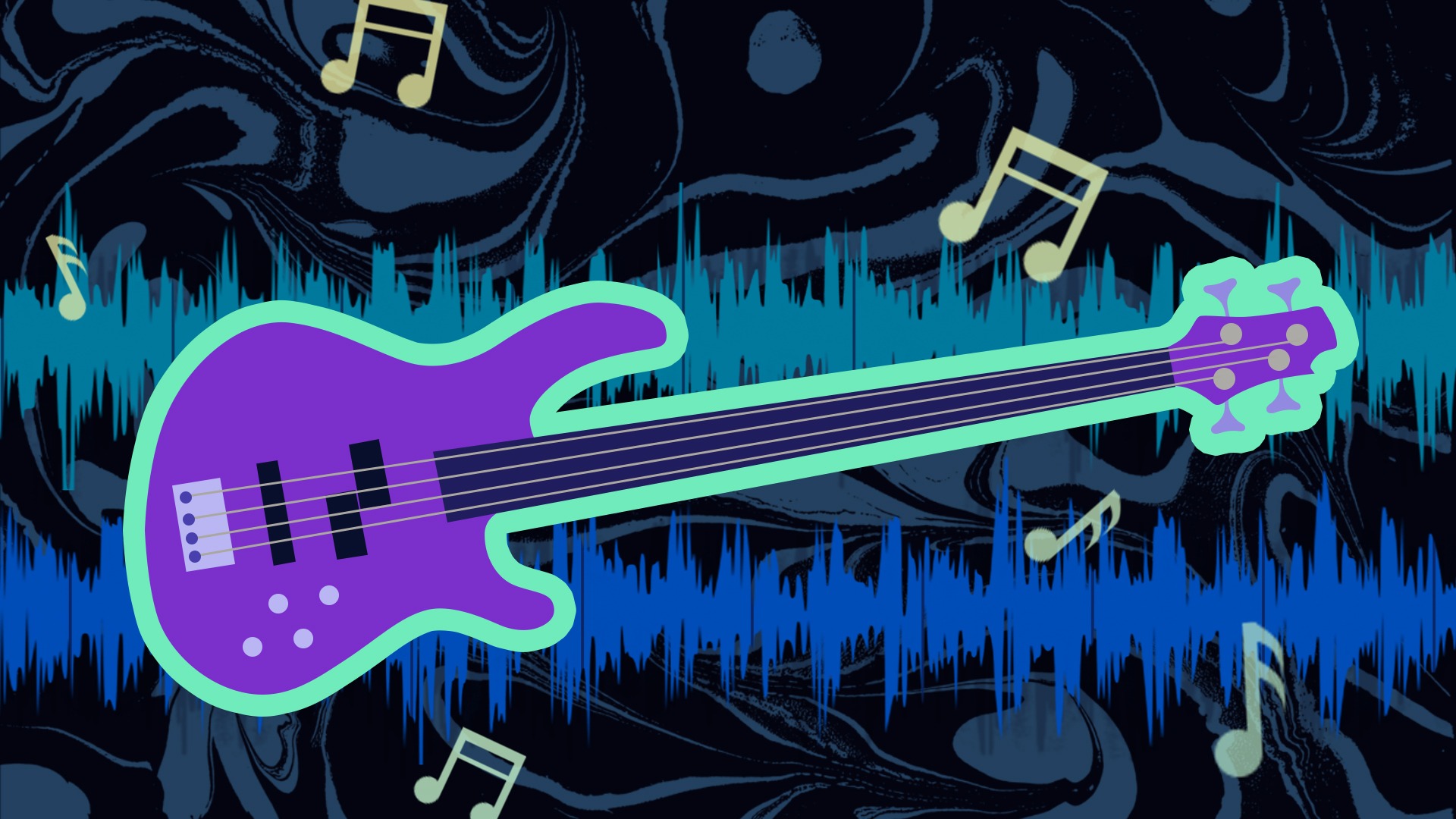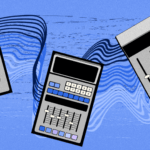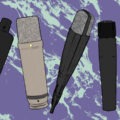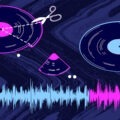There are several factors in a mix session that must be considered to make an instrument like the bass guitar sit just right for the song.
Do you want the instrument to dominate the low end and be the star of the show? Maybe it will play a better role as a supportive track, reinforcing the other rhythm instruments in the background. Every great mix with a clear, defined, and open-sounding low end has had to cement these stylistic choices before moving forward with the hard work. Let’s take a look at some of these key decisions.
Pro Tip: Pitch Correcting
While we usually want to jump head-first into some of the more exciting aspects of mixing, ensuring that the bass guitar is as close to perfectly-tuned as possible is arguably the most important instrumental element in a track, especially when compared to the need to perfect other instruments. It needs to be addressed first, as it can really mess with the overall feeling of the song, even if it’s a little bit out of tune with the other tracks, because it produces very strong fundamental frequencies.
One of the major benefits of playing the bass guitar as a monophonic instrument (in most cases) is that auto-tuners can be used on them in a rather stealth manner. Sometimes a well-tuned bass guitar will still be up or down a few cents when it gets handed over to the mix engineer. This tends to happen more often with bass guitar tracks than standard guitars due to the thickness of the strings. Pitch correction will just get the job done on the little bit of discrepancy and lock it in during the mix phase. It will tend to make your bass a bit more synthetic-sounding when it’s the star of the show though. But maybe that’s not such a problem for the aesthetic of your up-front bass guitar mix.
Mixing Around the Bass Guitar
If the bass guitar itself was recorded quite well on tracking day, you don’t really need to do a whole lot to its tone in the mix. A lot of how the bass guitar comes across in a final mix depends on how everything else is shaped around it. This is an often-overlooked aspect of getting the bass to feel right for the release of the recording.
Pro Tip: Creating pockets for the bass guitar
One of the easier approaches to this is to simply get instruments with lower tones out of the way of the bass guitar. If we want our bass to stick out, make sure the piano, low synths, and guitars are all a bit lighter in the low end with EQ.
Things can get quite a bit more difficult when other elements have to be on the low side as well. When you need guitars, vocals or synthesizers to sound powerful, it may take a bit of compromise. In this case, we may want to consider leaving a pocket for low-mid frequencies on the bass guitar.
Consider pulling out a bit more 700Hz-1.5KHz on the other instruments and giving the same range a bit of a bump on the bass guitar. Sure, the bass may not be the star of the low-end on the record, but it will have another range where it’s not being masked.
The overtones of the bass guitar tend to live in the low-mid range, along with the fundamental tones of the guitars. It could be a good idea to cut this range out of kick and tom drums, opting instead to get their punch from the higher mid-range. Four-string bass guitars don’t naturally have a ton of sub frequencies. Kicks, on the other hand, do have a naturally occurring sub-tone.
It’s usually best to allow kick drum to eat up the subrange on a record, then make sure the subrange on the bass is tight in the higher end of the sub spectrum (rolled off around 60Hz or higher).
Dealing with Very Low Sub Frequencies
There are cases where a bassist may be playing a 5 or 6 string instrument, or using an octave pedal that pushes their frequency range down low into the sub range. You need to ask yourself if you’re comfortable with the bass eating up the very deep lows while rolling off the kick drum.
If the bass and kick are meant to eat up the low-end together instead, prepare for some harder work and attention to detail. EQ, sidechain compression, or a combination of the two can really get the job done.
Pro Tip: Relationship of sub
Some careful pocket carving with EQ can help the kick and bass guitar keep up with each other. For instance, you could cut a tight band of 30-50Hz on the bass guitar, while boosting it on the kick drum. Find the first multiple of that frequency (60-100Hz) and flip the relationship (cut the kick while boosting the bass guitar here).
Pro Tip: Side-chain compression
You can also make space “keying” an inline compressor on the bass guitar with the kick drum signal. This will cause the compressor to only apply gain reduction to the bass when the kick drum strikes. By setting the attack and release very fast you can get the kick to poke out through the more constant bass guitar just long enough to be heard clearly, but not long enough to notice that the bass has ducked down.
Going the Distance with the Bass Channel Itself
Let’s say the bass guitar was, indeed, recorded great, but that we still want to give it an extra edge during the mix session. The approaches listed are not necessarily to be used in every mix and are not intended to be all used together. Instead, consider these solutions to help the bass guitar keep up with the other instruments in the arrangement.
Pro Tip: Modulation
Sometimes a band will ask for a “wide” bass sound, which can be achieved through modulation. Routing the bass through an AUX channel to a stereo chorus or flanger and then filtering out the low-end on the returned chorus effect really gets the job done.
Pro Tip: Overtone distortion
Most of the bass guitar’s character is defined by its overtones. It’s best to focus on distorting this range in parallel if you’re looking for a bit more bite than what was recorded on tracking day. Send a copy of the bass guitar through an aux channel and distort the living heck out of it with a preamp. Find just the right level for the return channel to fatten up the bass guitar and give it some character.
Pro Tip: Shaking the walls
This one can seem a bit funny when we strive so hard to get a nice tight room sound that doesn’t rattle when we track bass, but capturing the way a room rumbles on a separate channel can help give the impression of a spacious bass guitar. Playing the bass guitar through a big studio system with a sub at a high level on mix day can make some walls in the studio shake or rumble. Placing a couple of large diaphragm microphones on those walls and recording them in stereo to capture the shaking can prove to be an interesting parallel channel to mix back into the track.
Pro Tip: Amp sims and re-amping
Sometimes all you have to work with is a clean DI (direct injection) recording, but you might want something more. Amp Simulators such as “Amplitube” can be a great computer-based solution. They tend to come across as cleaner and bit more “synthy” than re-amping through a real amp, but sometimes that’s a good thing and lends to the aesthetic of the track!
If you want something a bit more authentic sounding, sending your signal back out of your converters and into an amp (or 2, or 3) is a better approach. The cool thing about this approach is that it allows you to generate your tones in parallel through a few different amps/mic combos. It’s common to get the low-end tone from an Ampeg amp, while getting the mid range tones from a Marshall amp, and maybe a distorted tone through a Mesa-Boogie amp. Blending these recorded, re-amped signals at just the right level can get you a very unique sound.
Pro Tip: Compressed low-end
A very common technique to disguise the overall compression on your album is to lock down the dynamic range of the bass frequencies while letting the mid and high frequencies dance a bit more. If you have both an amp and a DI signal, consider compressing the DI signal very aggressively during the mix down if the low end is moving too much. By keeping the amp dynamic and finding just the right level for the overtly compressed DI you’ll get the best of both worlds. If you don’t have both signals, consider placing a multiband compressor on the bass channel and use a medium attack/release to lock down everything below 150Hz.
Pro Tip: Subharmonics
When the band you are working with makes the decision to get the bass guitar deep into the sub range, they may want to get it to really shake the speakers. A subharmonic generator plugin (like waves “LoAir” for one) can add a ton of sub content in a way that EQ can’t. Waves also makes a plugin called MaxxBass that generates harmonics to help get a darker bass sound while also adding upper harmonics. This helps the signal translate well on smaller speaker systems, too. Be careful doing this if you want the kick drum to keep up in the sub range though. The more sub you add to the bass guitar, the harder it will be to make space for the thump of the bass drum.
Futuristic new-age equalizers
When it comes to low frequencies, we can run into the issue of some notes being much louder than others, depending on how the instrument is built.
It’s common to want to boost the frequency of the quieter notes using a standard EQ, but this can cause issues with the rest of the bass track. These problems are traditionally worked out during tracking sessions. The team will record extra takes with the EQ different on the amp so the engineer can comp in the note corrections.
Plugins provide a quick and easy solution. “Surfer EQ” is a plugin that comes to mind as an example. It tracks the fundamental note of your bass and allows you to EQ other frequencies in proportion to it. The EQ band will move along, going up and down in frequency depending on the notes being played. This is truly groundbreaking technology that solves problems engineers have had for decades, allowing them to pull up fundamental and harmonic notes to the same proportion, regardless of what is being played at any given moment.
—Final notes—
Just like mixing any instrument, mixing bass is really just the process of deciding what aesthetic you want and then figuring out how to get it out of your speakers. The real work comes in making that decision and creating a plan to make it happen. We hope this article has given you some great ideas and armed you with a few new techniques to help you get there once your mind is made up.
Illustration by Yihong Guo




















